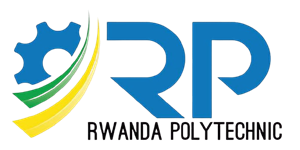This module has 5 credits and it is designed for a B-Tech of Mining Technology. It describes the knowledge, skills and attitudes necessary to implement company health and safety policy, manage risks and hazards and conduct incident/accident investigations. This module describes a trainer’s skills and knowledge required to apply the mine work health and safety management plan within the mining industry.
- Teacher: KAYIRANGWA Beatha
Introduction to Mathematical Modelling in Mining
1. Definition:
Mathematical modelling is the process of representing real-world mining processes or problems using mathematical equations, formulas, or simulations. It allows engineers and managers to analyze, predict, and optimize mining operations.
2. Purpose in Mining:
-
Optimization: Improve resource extraction, reduce costs, and enhance efficiency.
-
Prediction: Forecast ore quality, equipment performance, and production rates.
-
Decision Support: Assist in planning mining schedules, equipment allocation, and risk management.
-
Problem Solving: Understand complex phenomena like mineral deposits, ground stability, or environmental impacts.
3. Types of Mathematical Models in Mining:
-
Deterministic Models: Use fixed values to describe processes (e.g., exact ore volume calculations).
-
Stochastic Models: Incorporate randomness to account for uncertainties (e.g., ore grade variability).
-
Simulation Models: Replicate mining operations to test scenarios and predict outcomes.
-
Optimization Models: Identify the best strategies for mining operations, resource allocation, or cost reduction.
4. Common Applications:
-
Ore body estimation and mine design
-
Equipment and process scheduling
-
Safety and risk assessment
-
Environmental impact assessment
5. Steps in Developing a Mathematical Model:
-
Problem Identification: Define the mining issue clearly.
-
Assumptions: Simplify the real-world situation while keeping key factors.
-
Formulation: Translate the problem into mathematical equations or algorithms.
-
Solution: Solve the equations using analytical methods or computer simulations.
-
Validation: Compare results with real-world data to ensure accuracy.
-
Implementation: Apply insights to decision-making in mining operations.
6. Importance:
Mathematical modelling reduces trial-and-error, improves efficiency, saves costs, and ensures safer and more sustainable mining practices.
- Teacher: KAYIRANGWA Beatha
Mathematical modelling in mining is the process of using mathematics, statistics, and computational techniques to represent, analyze, and solve problems related to mining operations. The main goal is to improve decision-making, optimize resource extraction, and ensure safety and sustainability.
In mining, models help describe geological formations, estimate ore reserves, and predict how minerals are distributed underground. They are also used to design efficient mine layouts, plan drilling and blasting, and manage environmental impacts. By applying tools such as probability, calculus, optimization, and numerical simulation, mining engineers can reduce uncertainty and costs while increasing productivity.
For example, models can predict how much metal a mine can produce, estimate the lifespan of a mine, or simulate the effects of different mining techniques on the environment. With the rise of computer-based simulation, mathematical models have become powerful tools to test mining scenarios without real-life risks.
In summary, mathematical modelling in mining bridges theory and practice by turning complex mining problems into quantitative frameworks. This allows engineers and decision-makers to make informed, data-driven choices for efficient, safe, and sustainable mining operations.
- Teacher: Placidie MUKARUGWIRO

This module describes the skills and knowledge required to manage own performance and professional development. Particular emphasis is on establishing personal work goals, setting and meeting priorities, analysis information and using a range of strategies to develop further competences to meet the trending and innovative market demands.
- Teacher: Louis HABAGUSENGA

